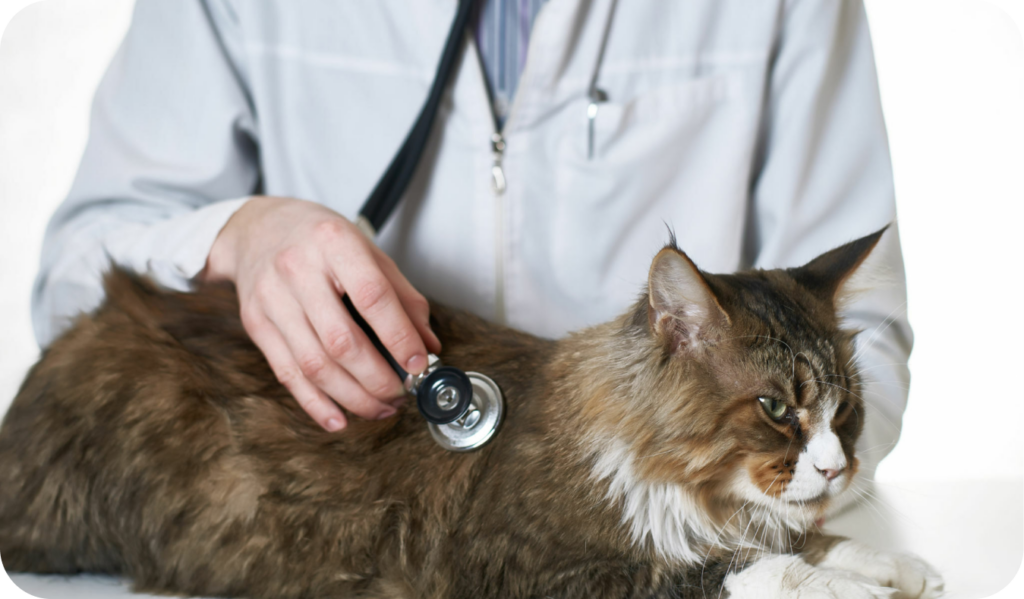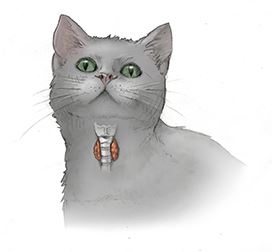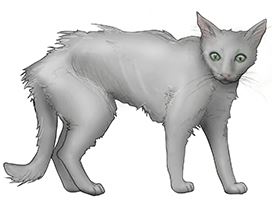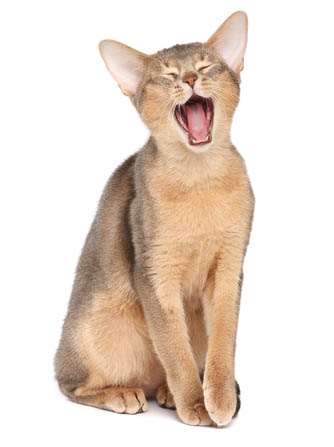Client Resources
Hyperthyroidism

Hyperthyroidism is a common endocrine condition that affects predominantly older cats. It is more common in female cats than male cats, however it can occur at any age. It can develop and progress slowly over several months. The thyroid gland is located around the airway midway up the neck. Thyroid hormone (T3 & T4) is involved in many metabolic processes such as heart rate, blood pressure, sleep-wake cycle, energy metabolism, fat storage and mobilisation, and thermoregulation.
Excess thyroid hormone production is often due to tumour development within the thyroid gland. These tumours are considered “active” and produce thyroid hormone without regulation. Some tumours are active but benign, meaning they don’t spread to other parts of the body, while others are considered active and malignant.

The most common signs seen are weight loss despite a ravenous appetite, unkempt hair coat, and increased thirst and urination. If the disease progresses, other signs may occur such as hyperactivity, vomiting, diarrhoea and sudden onset of blindness. Some of these clinical signs can be similar to many other disease processes that are common in older cats.

A thorough physical examination and clinical history can determine whether it is possible or likely that your cat has hyperthyroidism. A complete blood count and body biochemistry may reveal “supporting evidence” of hyperthyroidism, or complicating factors that may affect treatment or prognosis. Definitive diagnosis is made by a T4 blood test.
There are several methods of treatment for hyperthyroidism. Daily medications can be used to block the production of thyroid hormones. Dietary modification to restrict the intake of iodine (a critical component in the production of thyroid hormone) can be an effective management option in some patients. Daily medication or dietary modification is considered a life-long treatment, and stopping of these treatments will result in relapse of the clinical signs.
Radioactive iodine treatment can be used to destroy a controlled amount of the thyroid gland. This is a very effective treatment and is considered curative. However it does require referral to a specialist hospital for treatment.
Surgical options are also available to remove part of the thyroid gland, and are considered curative, however this is also a specialist procedure.

Daily tablets should be given twice daily at the same time as food. If you miss a dose then give the next one simply when you remember; if it is close to when the next dose is due then just wait until the normal time to give it. It is important to wash your hands after handling the medication as it may be absorbed through your skin.
If you are using dietary modification as treatment, then no other food types can be given. The cat’s entire diet must be the iodine-restricted diet only. This is not suitable for all people with multiple animals in the household, or cats that are outdoors.
A repeat comprehensive blood test and T4 level testing are needed 1 month after starting medication or diet to determine if the dose is appropriate, if any existing disease detected at initial diagnosis is improving, or if any new disease processes have developed. Kidney disease is the most common disease process identified after starting hyperthyroid treatment; hyperthyroidism can hide underlying kidney disease.
We recommend follow-up health checks and blood tests every 3-6 months.

